At the time, Morocco was the most exotic place that we had travelled to, so we were thrilled and a bit nervous when we landed in Marrakech. However, we quickly found the people to be among the kindest, most family-friendly, and thoughtful we met on our travels.
If you have ever wanted to try a road trip, Morocco is a great place to start. Driving in Morocco is the best way to get around and allows you to plan a personalized itinerary. This incredibly scenic and diverse country allows you to enjoy exotic cities, beautiful mountain ranges, breezy beaches, and golden dunes. And for driving enthusiasts, the roads are thrilling. Derek repeatedly wished he had his vintage Austin Mini to maneuver through the narrow mountain passes!
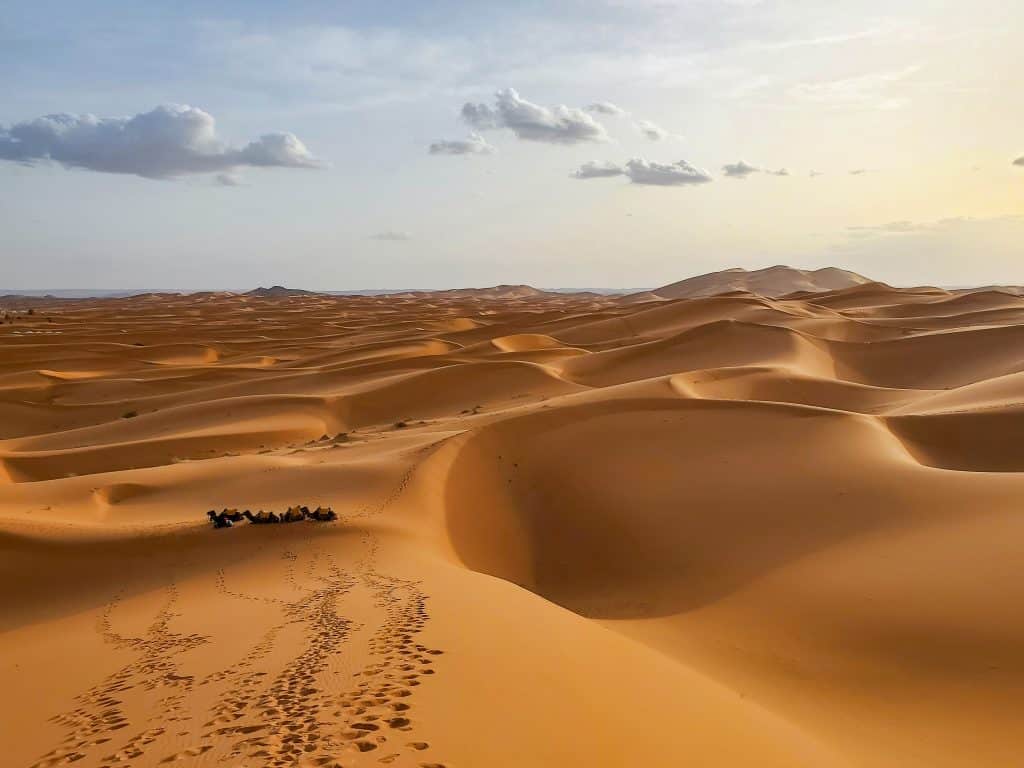
With two kids, we prefer to limit driving to half days and add a few rest days; therefore, we stretched our trip to four weeks. You could easily adapt our itinerary to two or three weeks if that’s all the time you have.
Driving Tips in Morocco
Before setting off on your road-tripping adventure, there are a few things you should know.
• Drive side: Right
• International Driver’s License Required: No
• Rental Costs: Car rental – small 4-door hatchback $ 20 CAD/day plus fuel. (As of Feb 2022)
Note: If you are travelling with young children, bring your own car seats and booster seats as they are not provided by car rental companies.
Watch Out for Speed Signs
While driving in both the cities and the outskirts, take it SLOW. Speed traps are frequent, as in every few kilometres! There is no flexibility. The police will pull you over for minor infractions. We were once stopped for going 62km in a 60km zone. In addition, the speed limit changes constantly. As a passenger, I was on sign duty, and keeping a lookout for changing speed limits was a full-time job. Luckily, even with being pulled over a whopping four times in four weeks, we never received a ticket. We admitted fault and apologized, and the police officer let us on our way.
Driving in Morocco
Driving in Morocco is hectic in large cities. Roads are busy, and drivers tend to push their way into narrow spaces between cars, particularly in traffic circles. We would often joke that the most aggressive driver wins. Traffic rules are not always followed. For example, we witnessed cars going the wrong way down one-way streets, driving on sidewalks, and ignoring traffic lights. Motorbikes add to the chaos, weaving in and around cars to reach the front of the line at intersections. Vehicles tend not to stop for pedestrians, even at traffic lights or crosswalks. Be mindful of pedestrians. Locals tend to step out into the streets and zigzag between cars until the vehicles slow or stop, often inches from them.
Once outside of the city, driving is more relaxing as there are far fewer cars. There are many paved roads between cities, but some rural roads are more challenging. You will also travel on gravel or unevenly paved roads with potholes, one-lane or two-narrow-lane roads with little to no shoulder, and roads without safety features such as guardrails.
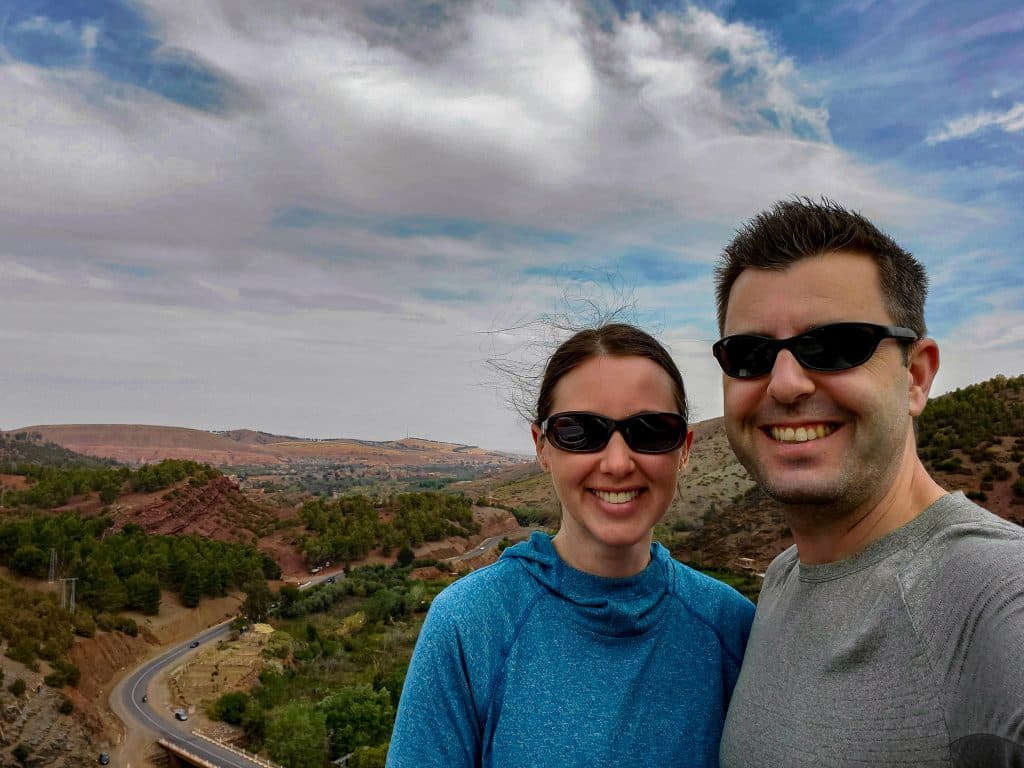
Day 1: Arrive in Marrakesh
Arriving in the evening, after a long travel day, all we were up for was a warm meal and our beds. Arabian Riad did not disappoint! We indulged ourselves with a delicious beef tagine before retiring to our comfortable, beautifully decorated room.
Where to Stay? Learn about the Pros and Cons of Staying in a Medina.
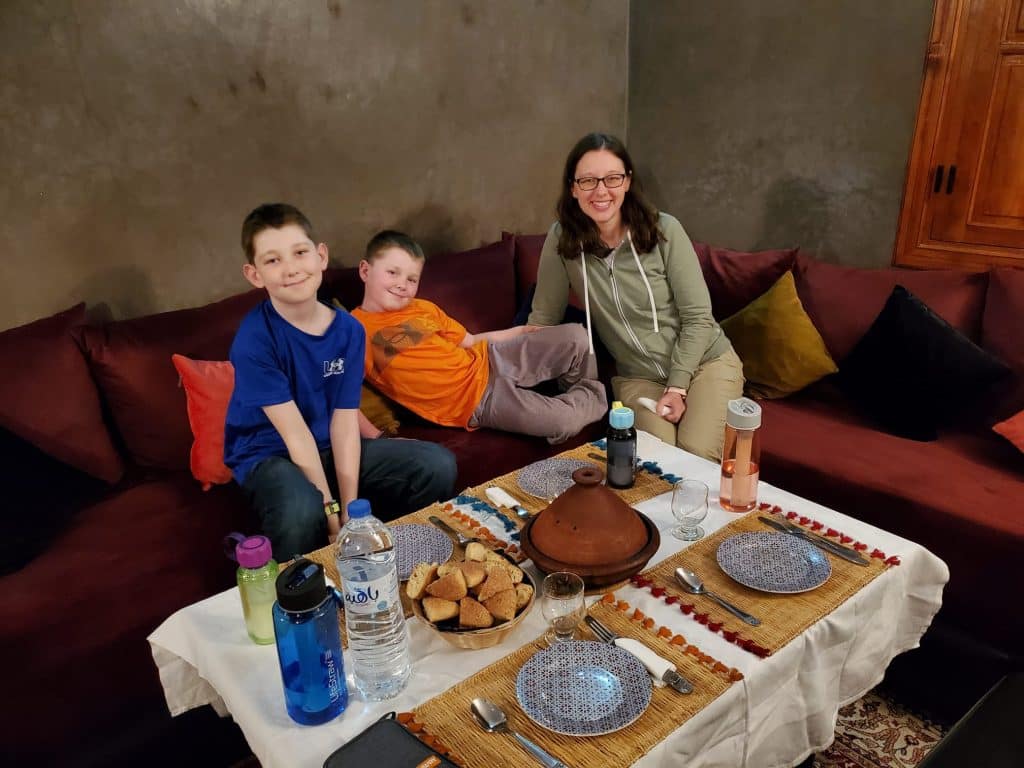
Day 2: Marrakesh Medina
The famous Marrakesh Medina is like a city within a city. It offers a unique experience of life in Morocco. The terracotta-coloured concrete buildings create a maze-like feel once inside; the deeper you travel, the narrower the streets become. Souks line the crowded streets full of people walking, donkeys pulling carts, and motorbikes whizzing past at full speed, weaving between patrons.
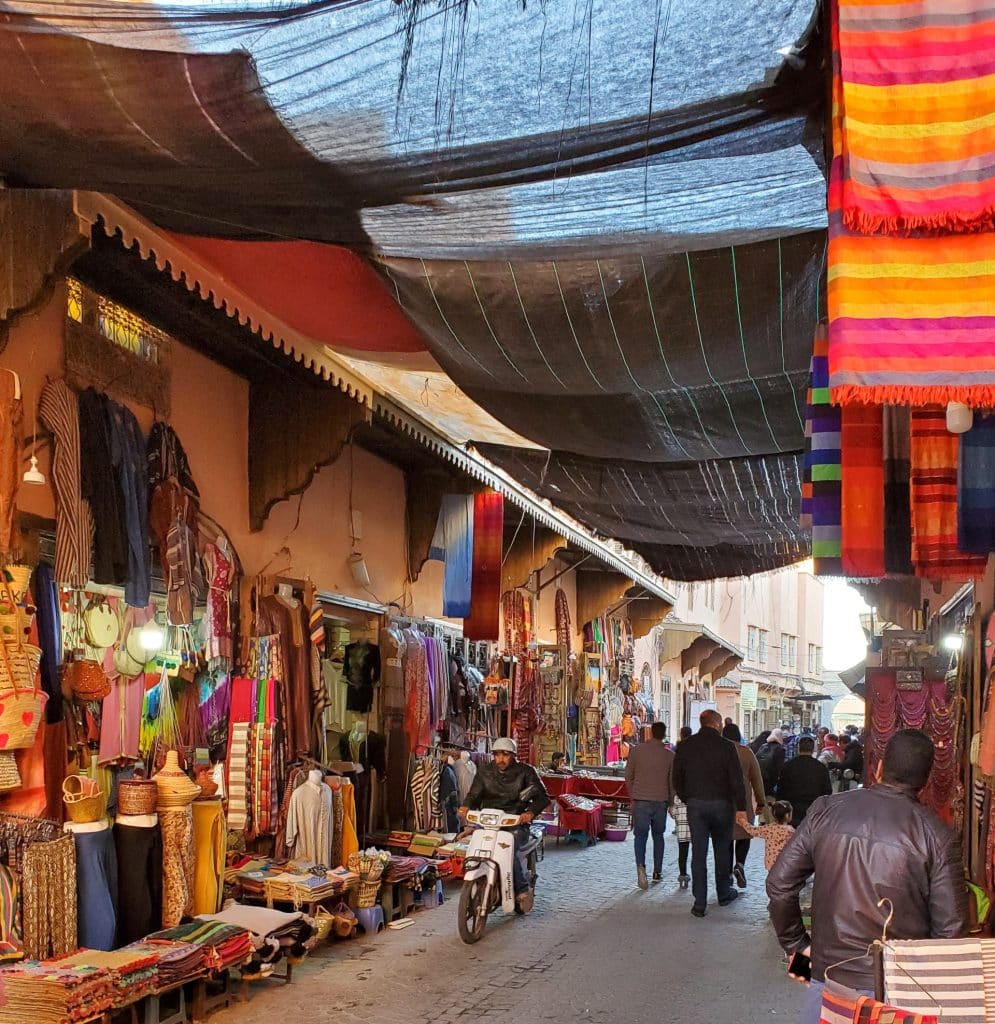
Spend your time wandering the streets, taking in the sights and smells. Stop by a tannery to watch the processing of textiles and leather goods. Enjoy the delicious flavours Morocco offers by sampling one of the many restaurants. Then, end your day by soaking in the last rays of the sun and admiring the chaotic beauty of the main square from one of the rooftop patios.
For tips on navigating the medina with kids, check out our one-day itinerary. Exploring the Marrakesh Medina with Kids.
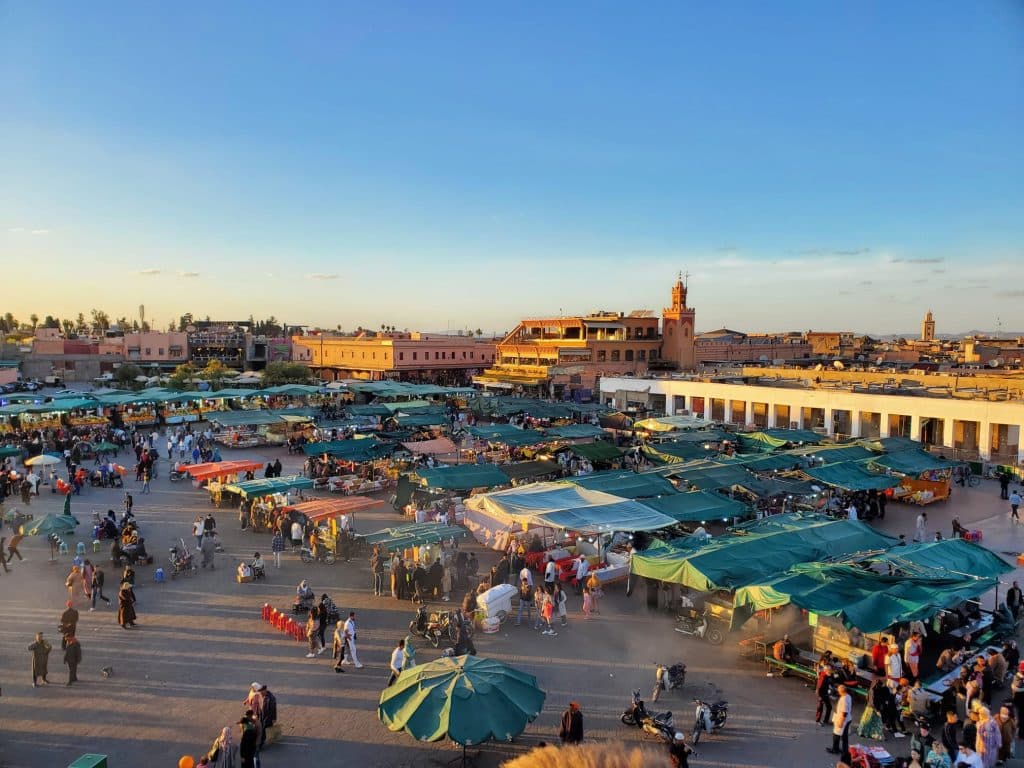
Day 3 to 7: Essaouira
Drive time: Marrakesh to Essaouira (2 and a half hours)
Once out of Marrakesh, it was an easy drive to the coastal town of Essaouira. Along the way, we were entertained by the sight of a herd of goats standing on the branches of an Argan tree, munching on tasty fruit.
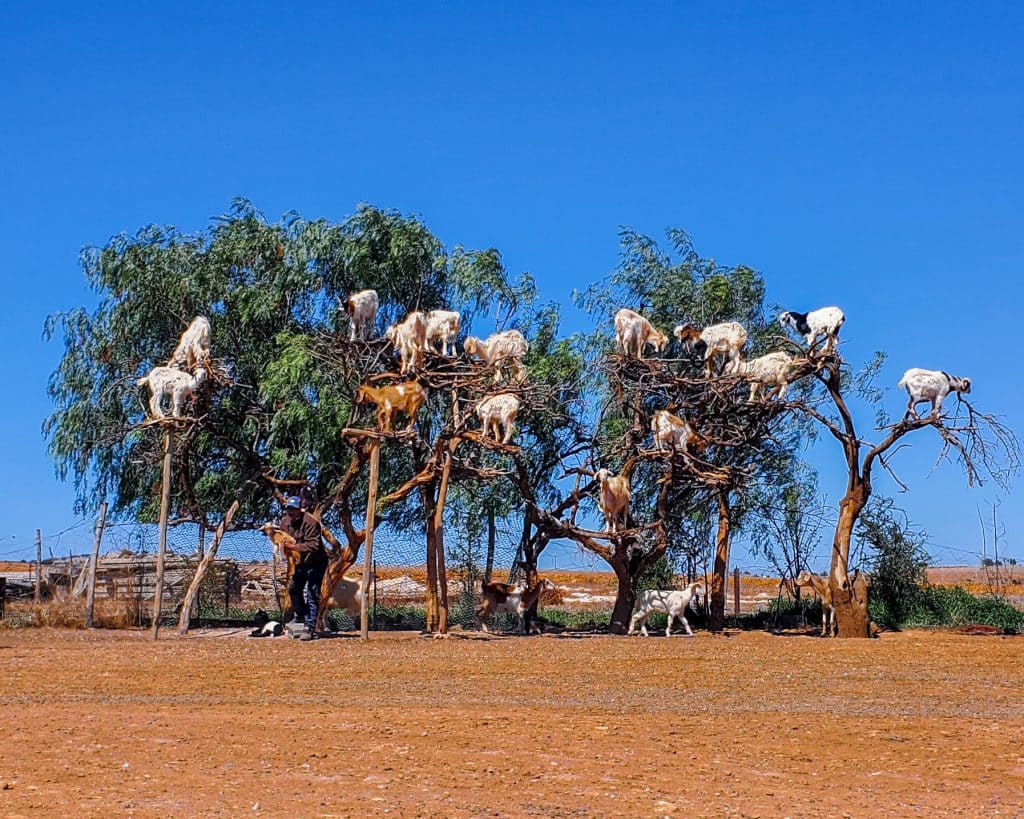
Known as the Windy City of Africa, Essaouira is a sought-after beach destination for tourists and locals alike. Although we visited during the calm months, the coastal town certainly lived up to its name. Mornings and evenings were mild, but high winds ripped up the beach in the afternoon, kicking up the sand.
The laidback atmosphere of the town was perfect for exploring the famous fish market, taking a stroll through the medina, or enjoying the view from a seaside restaurant patio. If your kids love soccer, head to the beach and join in with some local kids.
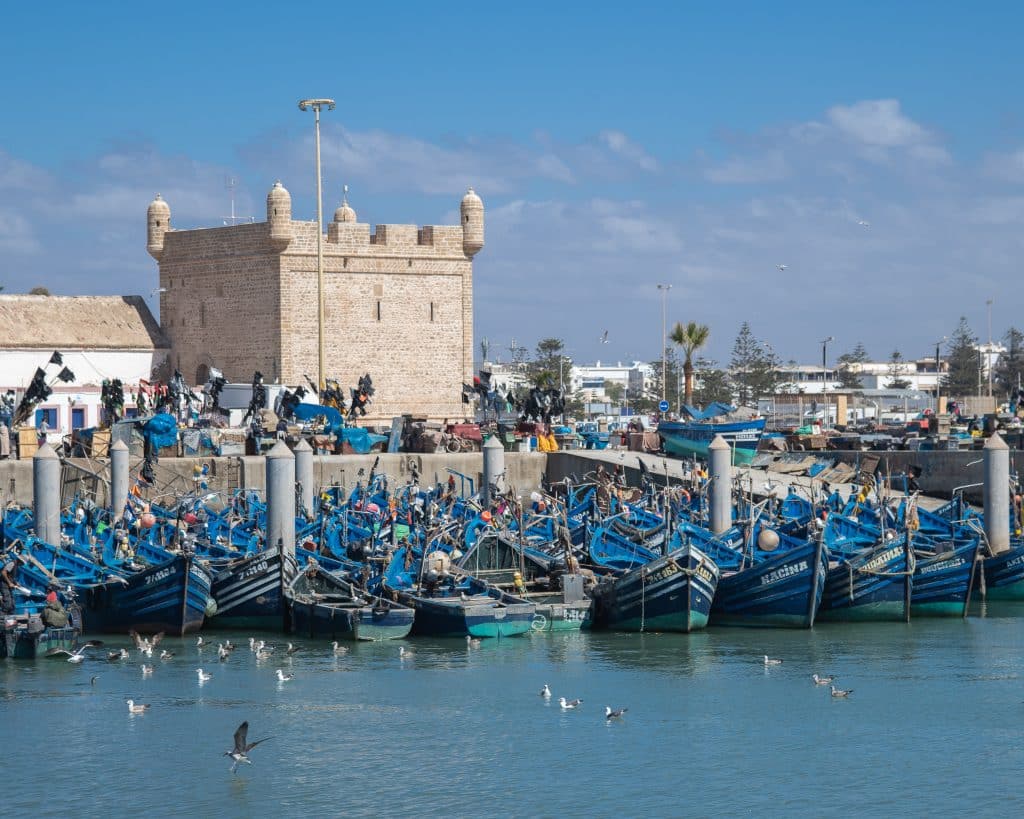
Where We Stayed
We rented an apartment steps from the ocean, the perfect location for morning walks along the boardwalk, access to the famous fish market, visits to the medina, and exploring the historical fort, Castelo Real (featured in Game of Thrones). The apartment was bright, spacious, and comfortable.
Our initial plan was to stay in Essaouira for three days, however, this was extended due to our son becoming ill. Our host was truly amazing and went above and beyond to help us navigate our son’s illness. He arranged for a physician to come to the apartment, assisted us in finding a pharmacy, and returned the next day to check in on us.
Day 8 to 12: Ourika
Drive time: Essaouira to Ourika (3 hours and 30 minutes)
Heading inland again, past Marrakesh, we discovered the small town of Ourika, with plenty of local markets to shop, delicious restaurants, and a central location for day trips. Ourika was the perfect place for a home base over the next five days.
From Ourika, we did two-day trips that were among the most beautiful and scenic places we visited. The first was to the waterfall at Setti Fadma, and the second was to Imlil to hike the Atlas Mountains.
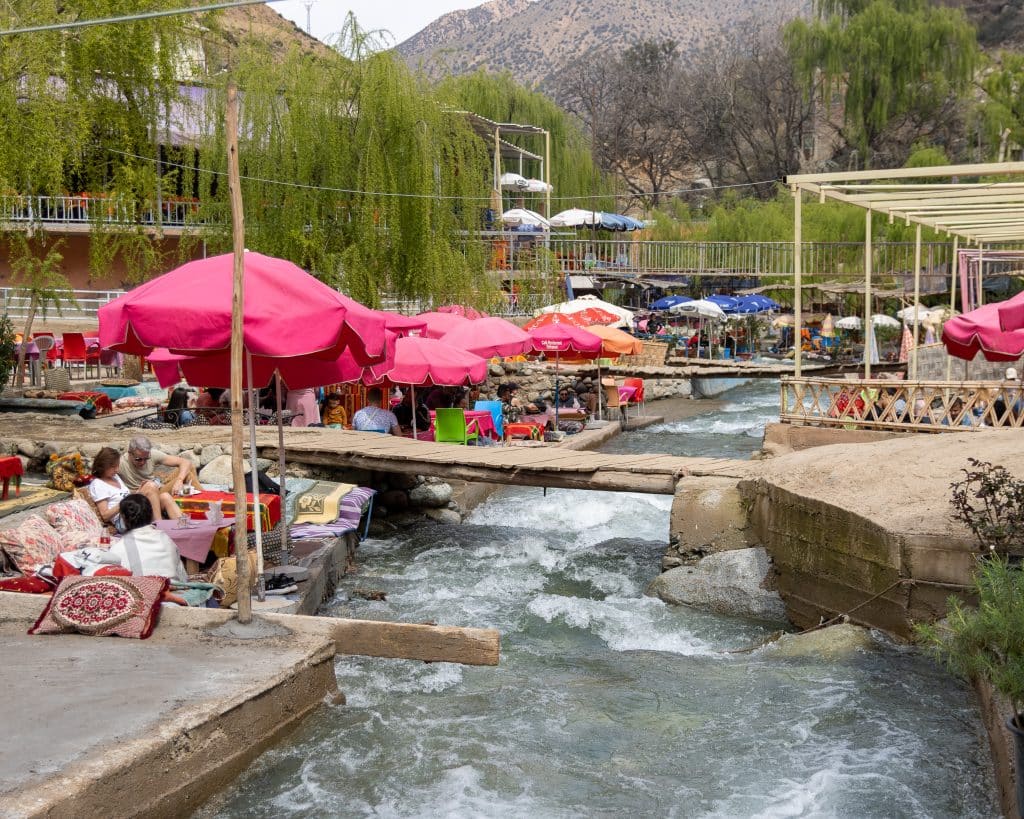
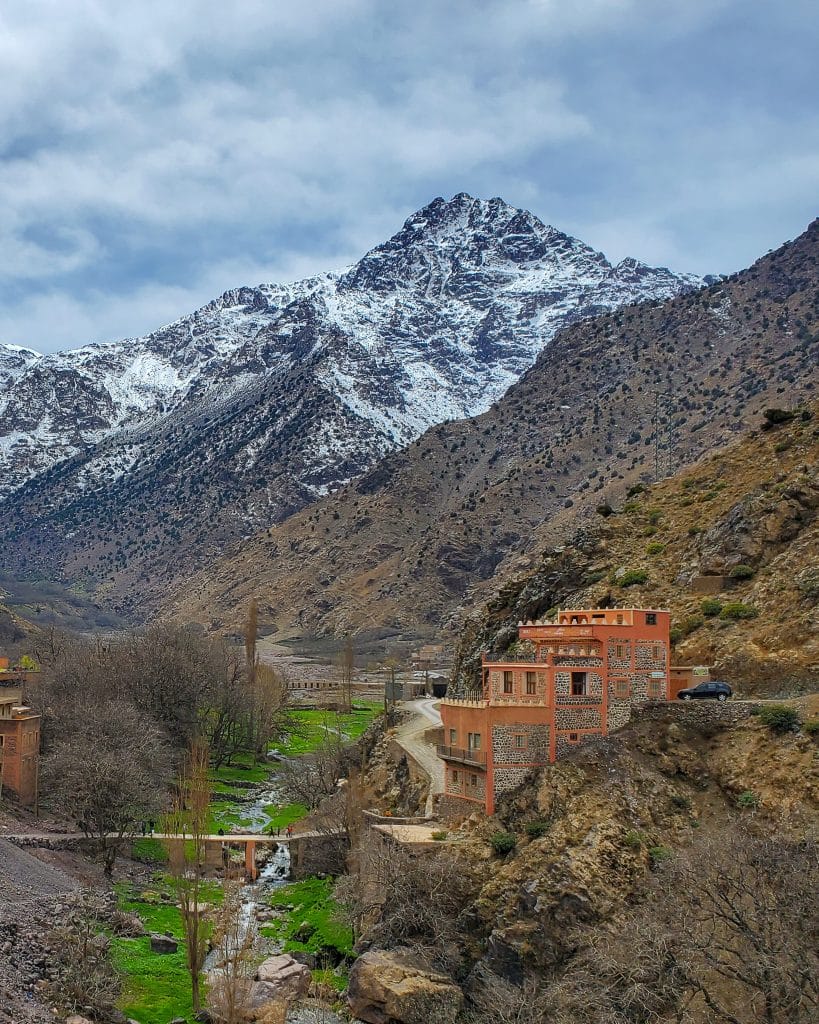
Where We Stayed
We loved the Airbnb in Ourika. It was within walking distance of markets and restaurants, and the apartment felt spacious and cozy at the same time. A bonus was a private patio with a seating area overlooking a mountain range and a communal pool with lounge chairs. Plus, this unit had central heating! The only place we stayed that did. It felt like quite the luxury.
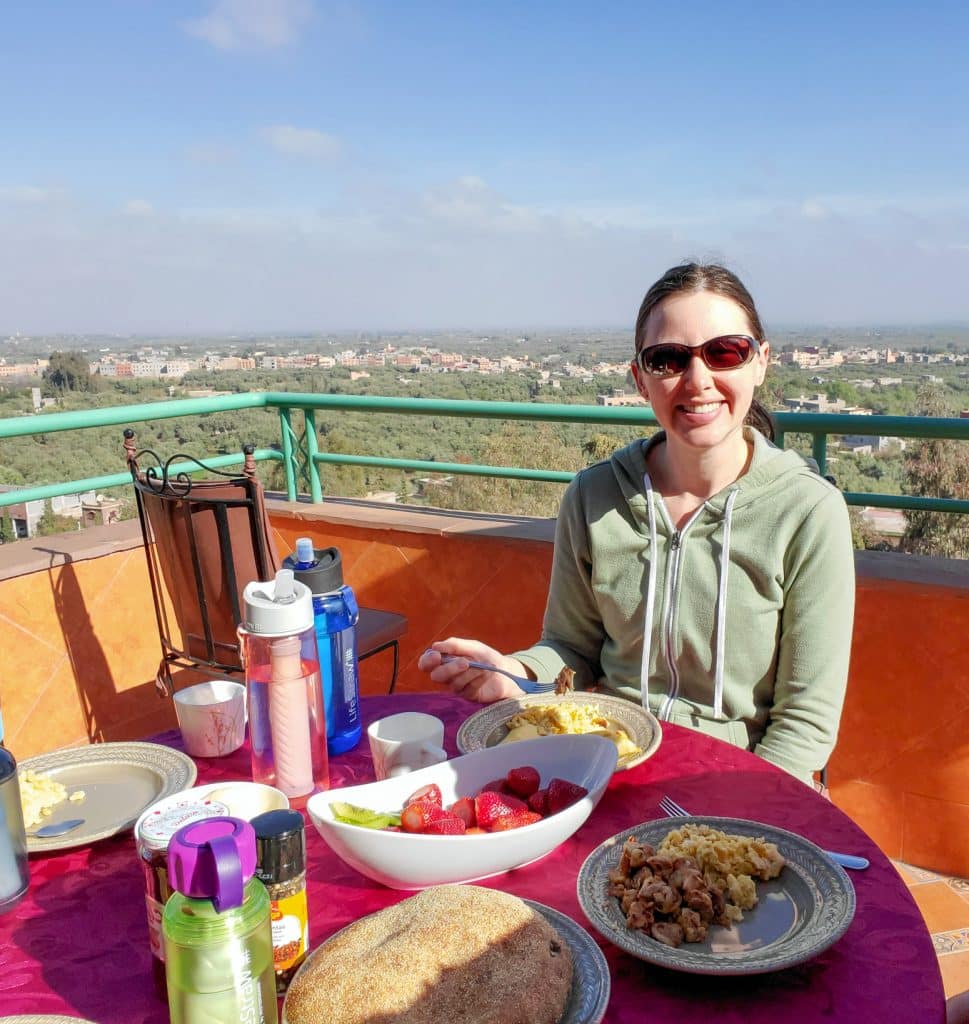
Day 13: Ouarzazate
Drive Time: Ourika to Ouarzazate (3 hours and 30 minutes)
After Ourika, we began making our way east to the Sahara Desert, stopping at a few towns along the way to break up the journey.
Sometimes on road trips, you find that the drive can be an attraction on its own, being surprised and delighted by the incredible scenery you pass. This is how we felt about the winding road and ever-changing landscape on our journey from Ourika to Ouarzazate.
The large town of Ouarzazate seemed to pop up out of nowhere in the middle of the desert with giant billboards and streets lined with palm trees and streetlamps, reminding us of Southern California. Known for its role in the film industry, Ouarzazate has several studio buildings and film sets easily seen by the main road as you enter the city.
Day 14: Ait Benhaddou on route to Tinghir
Drive time: Ouarzazate to Tinghir (2hrs and 30min)
Our main reason for staying in Ouarzazate was its proximity to Aït Benhaddou, a UNESCO World Heritage Site. Ait Ben Haddou stands tall in the foothills of the Atlas Mountain range, a magnificent example of a clay structure from a thousand of years ago. Once a significant Ksar, or trading route between the Sahara Desert and Marrakesh, it is now home to a few Berber families. This is a must-see for any film enthusiast as many famous movies, including Indian Jones and Gladiator, and T.V. series such as Game of Thrones have been filmed here. Be sure to climb to the top to see sweeping views of the valley and town below.
Find out more about Aït Benhaddou and other must see attractions.Travelling to the Desert – Stops Along the Way.
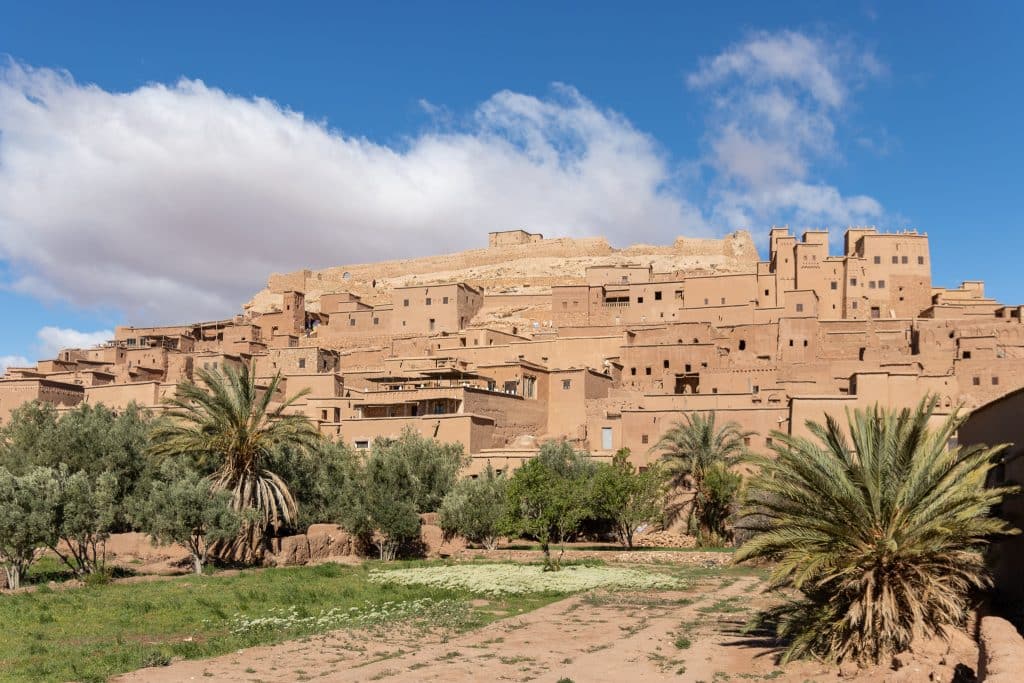
Day 15: Dadès Gorges (overnight in Tinghir)
Drive Time: Tinghir to Dadès Gorges (1 hour)
A trip to Dadès Gorges is worth a stop on route to Tinghir or a full-day trip if you love hiking. There are several trails in the area, the Monkey Fingers being one of the more popular hikes. Then visit Dadès Valley Switchback for an exciting drive and breathtaking views.
To plan your family hike, check out – Exploring Dadès Gorge: A Family Hike the Monkey Fingers Trail
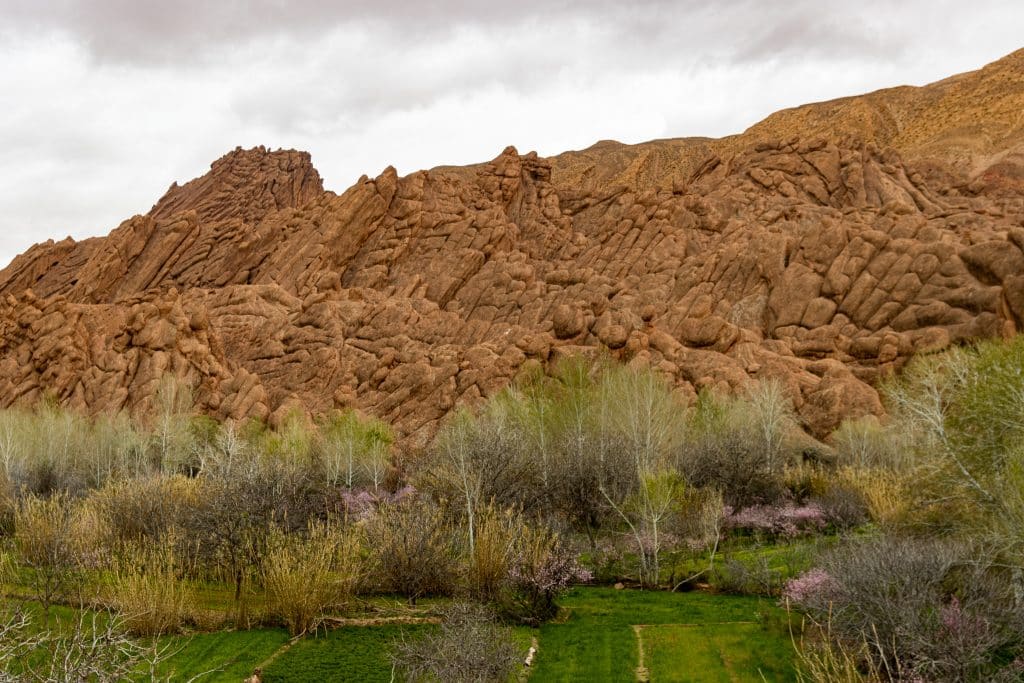
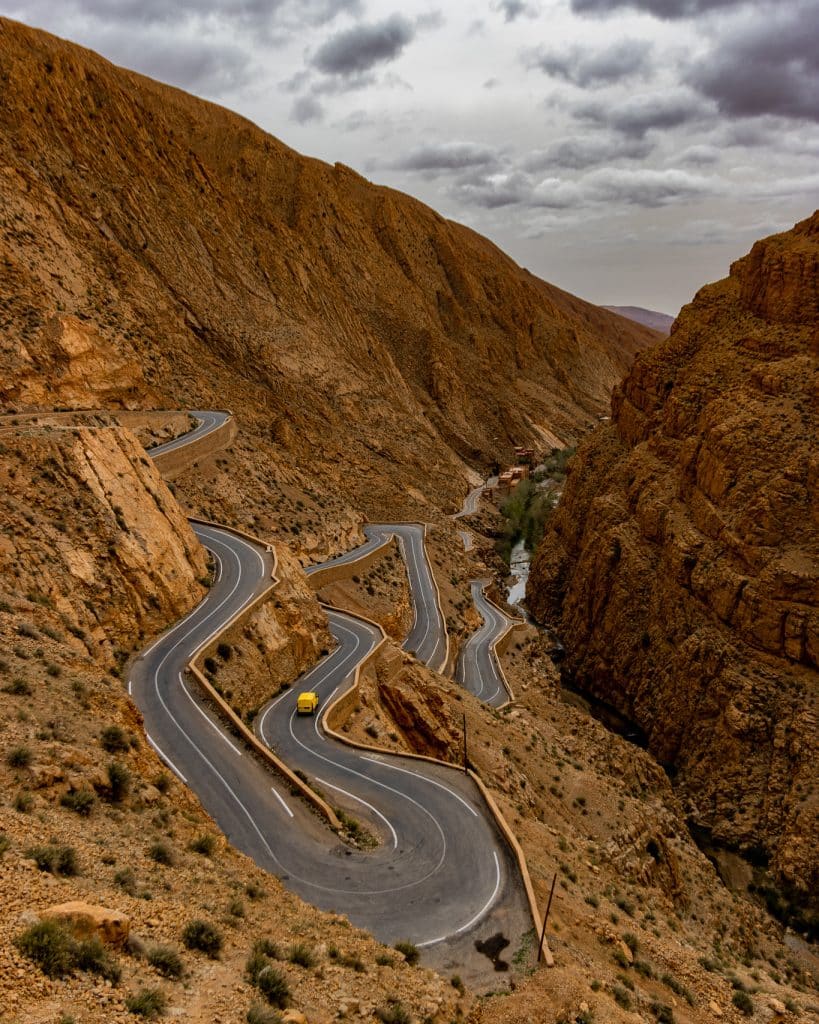
Where We Stayed
This was our first time staying in a hostel with kids, and we had a great experience at Le Retour au calme Maison d’hôtes. The small room, with three beds and a private bathroom, overlooked the courtyard and had a fantastic community feel. The boys loved playing ping pong and chatting with the hosts and other guests. In addition, our stay included a delicious Moroccan breakfast and access to a communal kitchen for lunch/dinner prep. The breakfast was so large, with crepes, cakes, cheese, yogurt, and omelets we often didn’t need lunch. The only downsides were the unreliable Wi-Fi and extra charges for heating in the room.
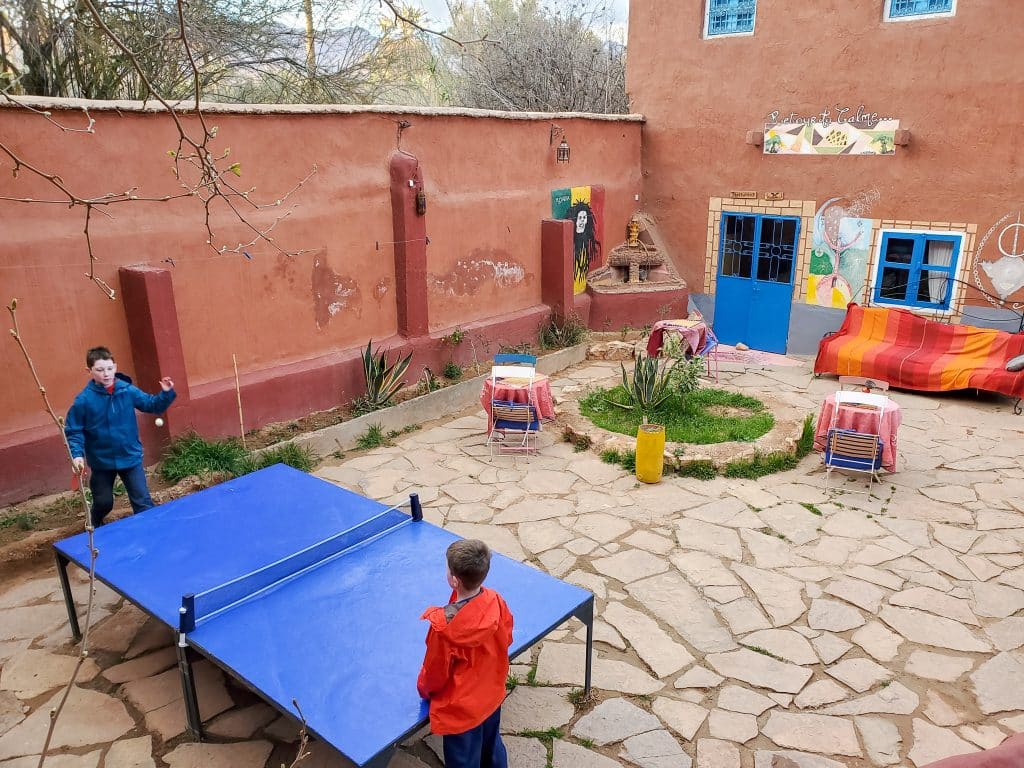
Day 16 to 17: Camel Trek in the Sahara Desert
Drive time: Tinghir to Merzouga (3 hours)
Finally, it was camel trekking day! The boys had been counting down for this adventure since we arrived in Marrakesh, our youngest dying to snuggle the camels.
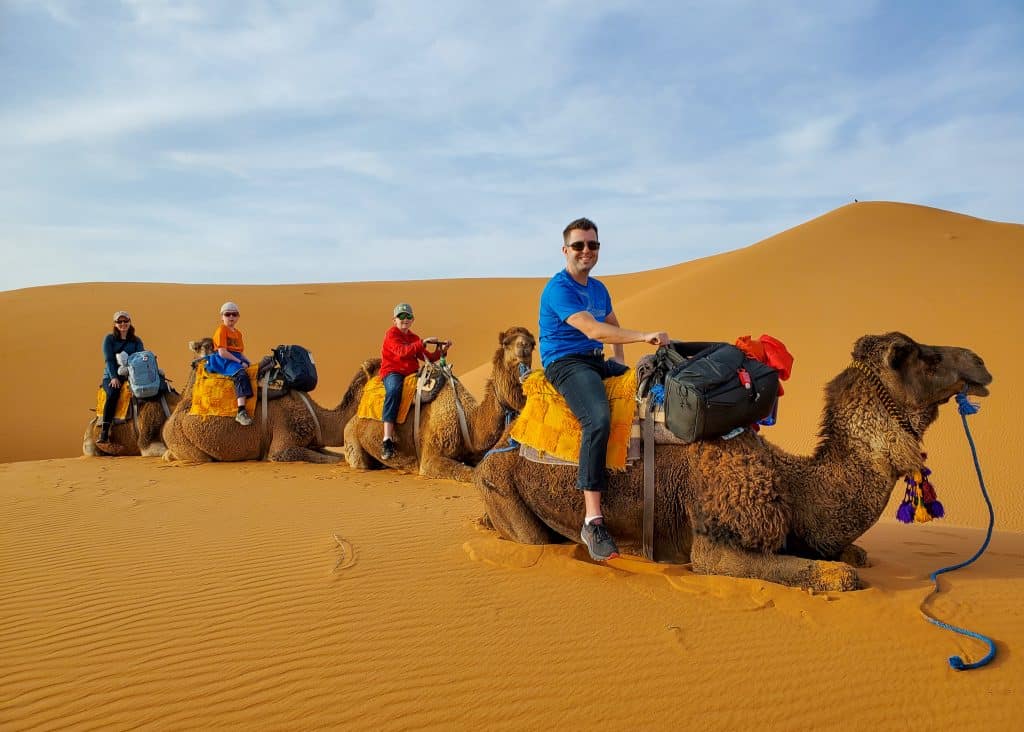
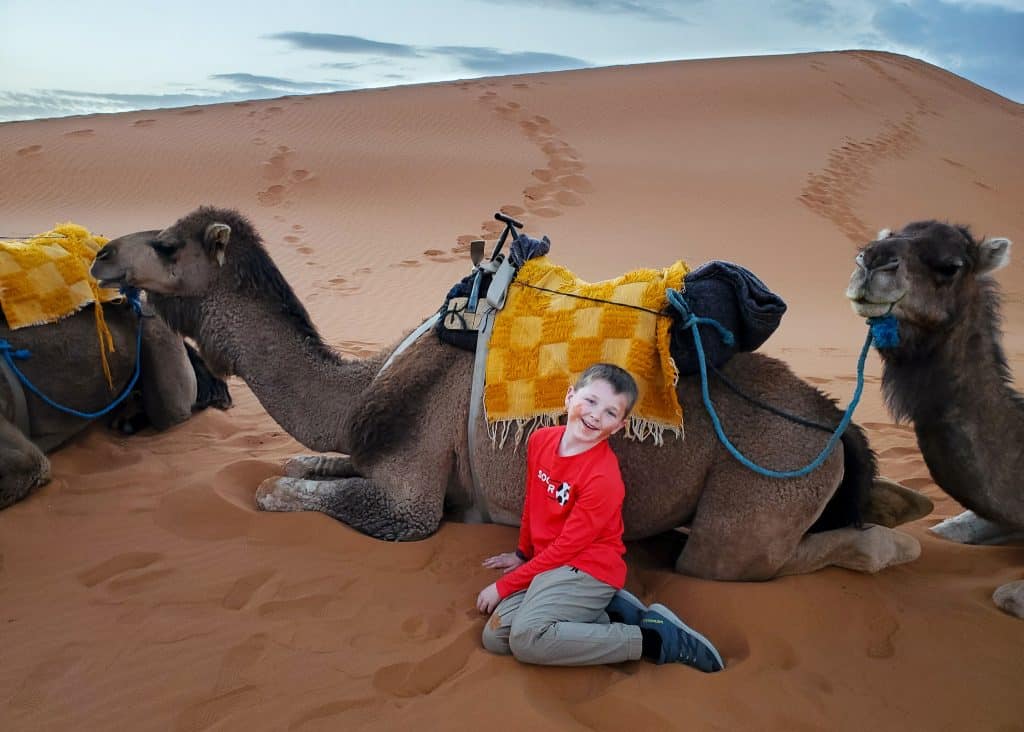
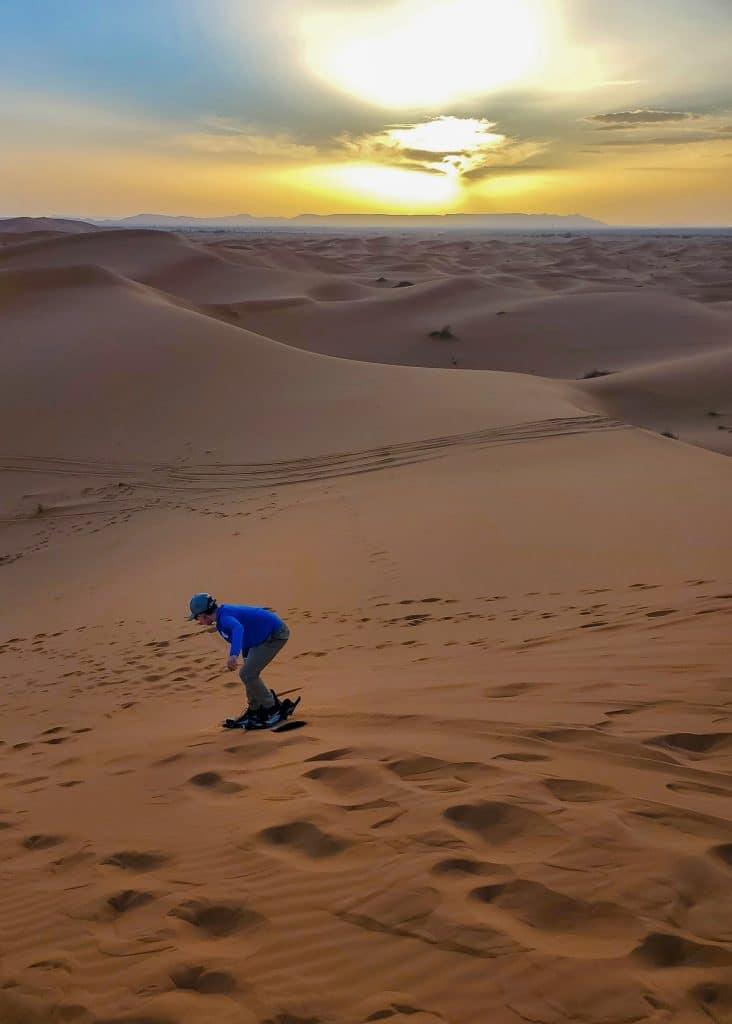
We spent three days and two nights “glamping” in the desert. We filled our bellies with delicious food, enjoyed incredible sunrises and sunsets, and fell in love with these gentle animals. Our camel trek was the highlight of our time in Morocco, and we cannot recommend it enough. In our minds, it’s a must-do when travelling here.
For tips on what to expect with kids and details on our three day itinerary, check out – Camel Trekking in the Sahara: A Family Adventure You’ll Never Forget
Day 18: Errachidia
Drive Time: Merzouga to Errachidia (2hrs)
We returned to Merzuga from our camel trek early this morning. Our drive today was meant to break up the long journey between Merzouga and Meknes because we felt it would be easier with the boys. If you’re up for it, we recommend driving the distance (454km, approximately 7 hours) in one day, as there is little to see in Errachidia.
The drive was lovely. We continue to be surprised by the diverse landscape and beauty of Morocco. This leg of the journey started in the coppery desert. By the afternoon, we were travelling through an evergreen forest and saw a baboon family playing along the side of the road.
Day 19: Meknès
Drive Time: Errachidia to Meknès (5hrs and 30min)
As we headed further north to Meknès, the landscape changed again, with rolling green hills, crops and orchards, and miles of farmland. At times it felt like we were driving through an English countryside.
Day 20: Roman Ruins in Volubillis (overnight in Meknès)
Drive Time: Meknès to Volubillis (45 minutes)
Close to Meknes is another UNESCO World Heritage site. Volubillis is an ancient Berber-Roman city dating back to the 3rd century B.C. As we walked down a stone pathway into the grassy area that housed the archeological site, the ancient columns and architecture came into view. Surrounded by rolling hills and farmland, it felt like we had been transported from Africa to Europe. The ruins included bathhouse structures, an aqueduct system, a cathedral, and numerous tile mosaic art pieces.
This was a fun activity that engaged our boys. They enjoyed identifying the buildings based on the map, learning the aqueduct systems, seeing colourful mosaic tiles, and hearing about Roman life. It also allowed them to burn their energy, running and climbing through the ruins.
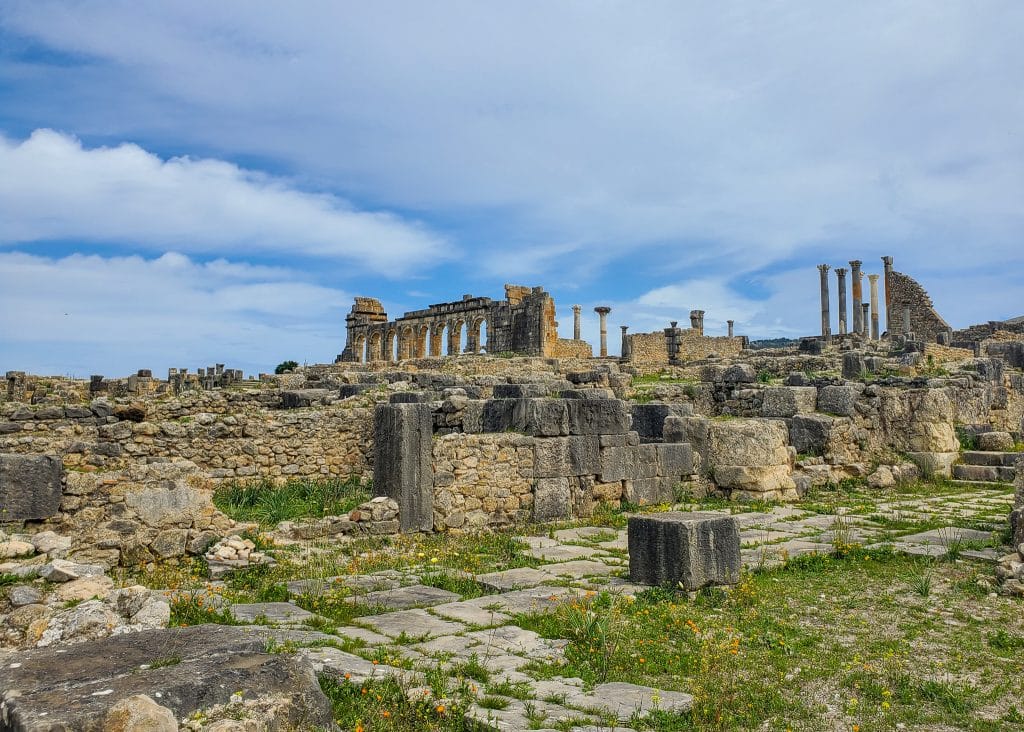
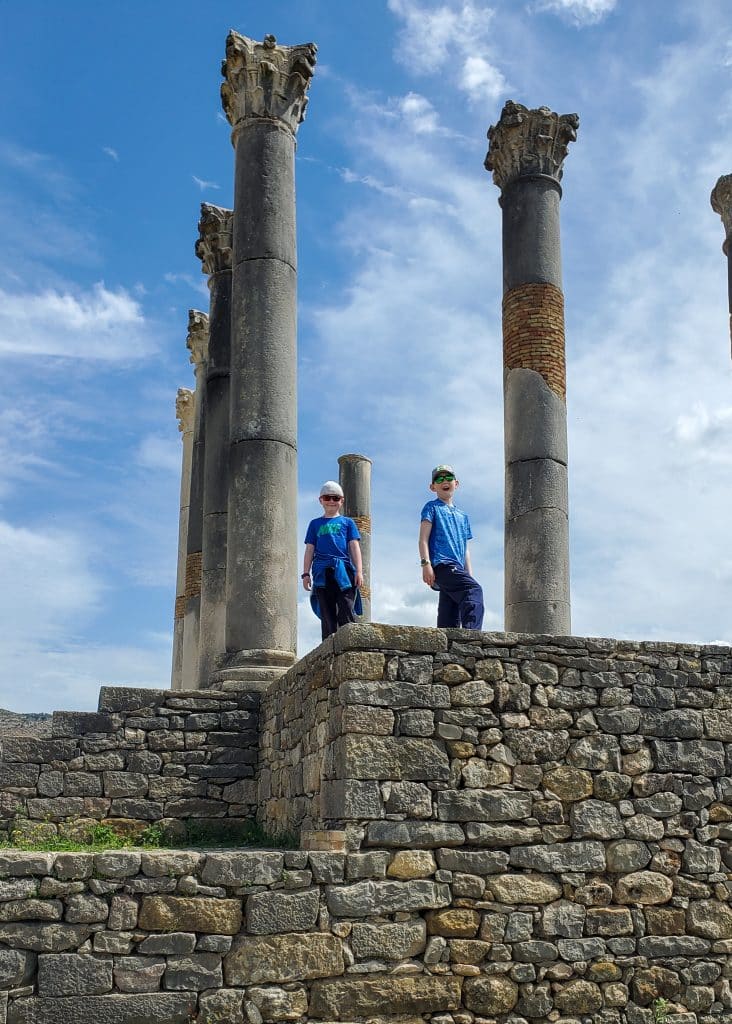
Day 21 to 25: Chefchaouen
Drive Time: Meknès to Chefchaouen (6 hours)
As we approached Morocco’s famous Blue City, Chefchaouen, a wave of indigo, azure, and turquoise flooded our senses. Pictures just don’t do it justice.
Before arriving, I did some research on why the city is painted blue. There are several theories. Some say it’s to keep the homes cool in summer or that the colour repels mosquitoes, while others believe the soothing hues attract tourists. However, the most common reason I discovered was that the colour is a remnant of the city’s heritage. During WWII, there was a large influx of Jewish people to the area. The tradition of painting homes blue began with them, and it was meant to represent the sky and the closeness to heaven. Locals have continued the tradition ever since. Regardless of the reason, the lovely blue atmosphere had a wonderful calming effect as we followed the twists and turns of the medina.
Wondering if you should stay inside a medina with kids? Learn More: The Pros and Cons of Staying Inside a Medina
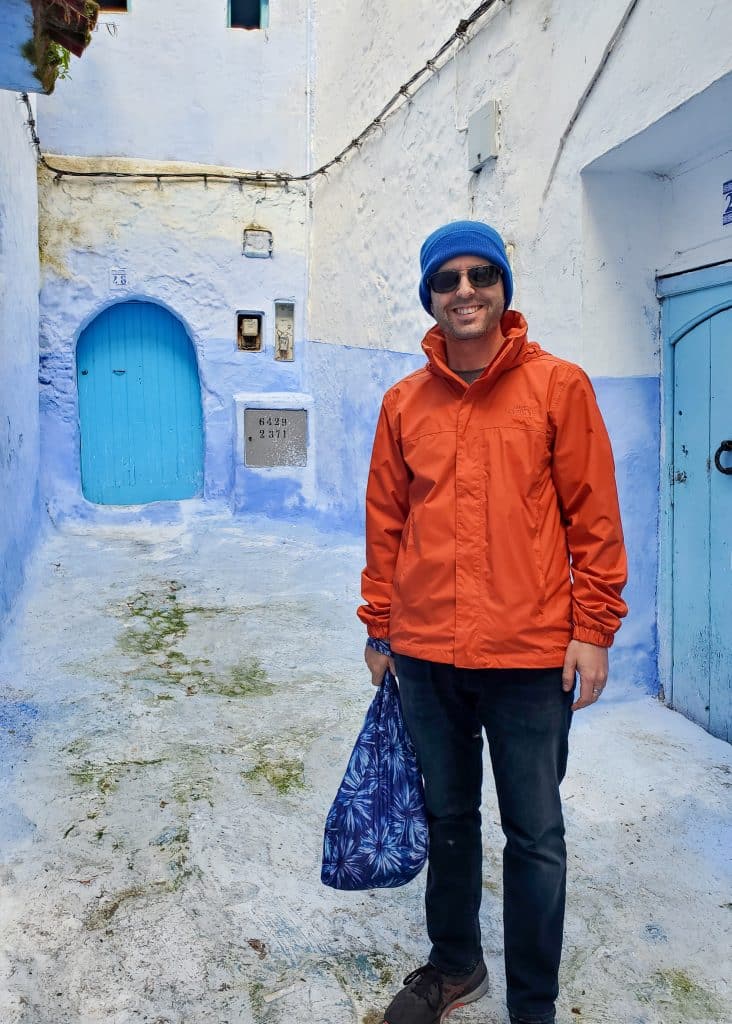
Day 26 and 27: Casablanca
Drive Time: Chefchaouen to Casablanca (6 hours)
Unfortunately, our final city in Morocco was a disappointment. Casablanca is a large metropolis and there are far more beautiful cities in Morocco to spend time in. The traffic was challenging, with aggressive drivers and many cars pushing their way into lanes. Walking was equally difficult, having to constantly watch in every direction for rogue vehicles and motorbikes. The city was nothing how I expected, nor did it have any resemblance to the city featured in the famous black and white film. Not a single scene from Casablanca was filmed in the namesake town.
However, if you find yourself in Casablanca, be sure to make your way to the Mosque. The sheer size of the mosque is impressive, but what I loved the most was the beautiful cream-coloured walls and turquoise-accented stone floor against the ocean backdrop. It made for some breathtaking photos, despite the pouring rain.
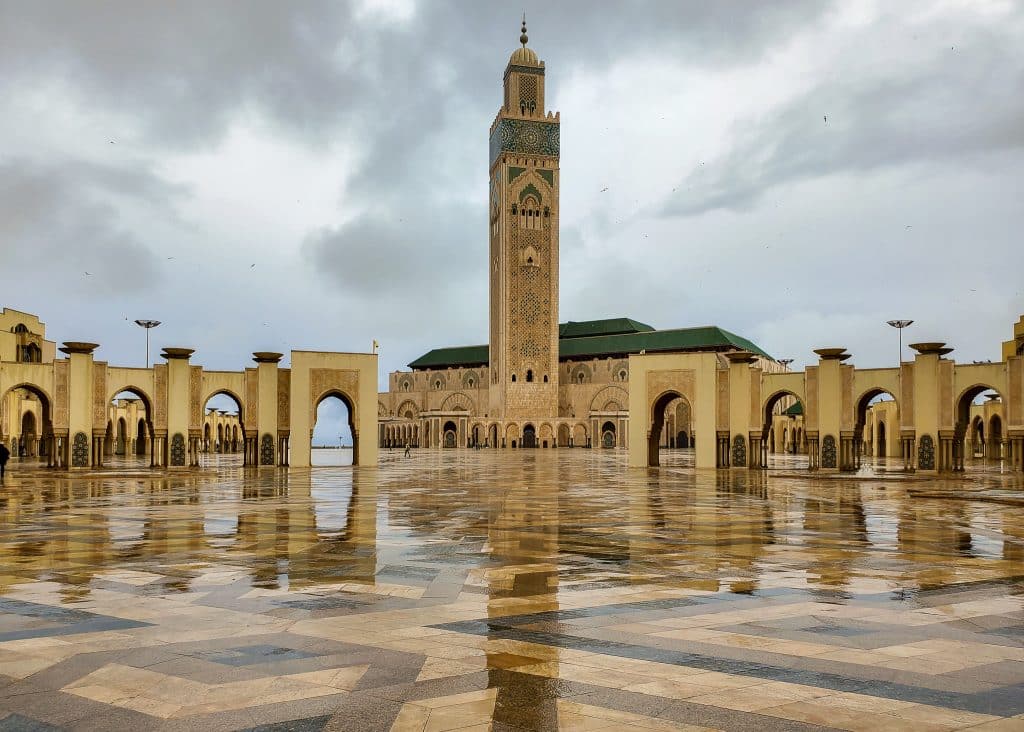
There you have it!
Our 27-day Moroccan road trip itinerary. Although we left feeling like we had seen much of the country, we were still eager to return to discover more.

